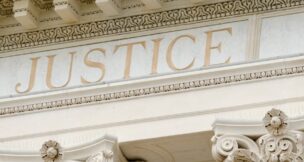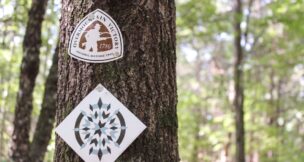Lost in 1864, this flag of the Charleston Light Dragoons is coming home to S.C.
CRBR Biz Wire //June 28, 2023//
Lost in 1864, this flag of the Charleston Light Dragoons is coming home to S.C.
CRBR Biz Wire //June 28, 2023//
 COLUMBIA, S.C. – The Charleston Light Dragoons – formed in the eighteenth century – were not your everyday cavalry unit. They were more like a very exclusive social club, made up of the sons of the colony’s wealthiest citizens. They had strict rules, but the punishment for infractions usually involved alcohol – either being forced to drink large quantities, or buy drinks for the other guys.
COLUMBIA, S.C. – The Charleston Light Dragoons – formed in the eighteenth century – were not your everyday cavalry unit. They were more like a very exclusive social club, made up of the sons of the colony’s wealthiest citizens. They had strict rules, but the punishment for infractions usually involved alcohol – either being forced to drink large quantities, or buy drinks for the other guys.
They had relatively little combat experience for a long time. That changed dramatically in 1864, when they were sent to Virginia as part of the 4th South Carolina Cavalry Regiment, and encountered some of the bitterest fighting in the Civil War. At some point while fighting Union cavalry from Michigan, they lost a flag that served as a rallying point in battle.
And now, someone in Michigan wants to give it back, to the South Carolina Confederate Relic Room and Military Museum. Dave Downing is coming down to Columbia on July 5 to do just that. The public is invited to the presentation in the museum’s Education Room at noon on that date. Downing will tell the story of how he found the lost flag. And Eric Emerson, director of the South Carolina Department of Archives and History, will tell the colorful story of the Dragoons themselves.
Dave Downing is among other things a Civil War re-enactor – one who usually wears blue instead of gray. He also volunteers in a project called Save the Flags, which has preserved, researched and displayed about 270 banners carried by Michigan soldiers in the Civil War, the Spanish American War and World War I. About 10 years ago, he was speaking to a community group about that project, and afterwards, one of the listeners came up to him and said, “I’ve got this flag…”
“He came back the next day and gave it to me,” Downing recalls. It was in really good shape, for a Civil War flag – so good that he decided it must be a reproduction. He set it aside, and didn’t think about it until two or three years ago.
Then, the Save the Flags project received another flag donation from the same period. It was real, but looked like it had come fresh and new from a package. That made him think of the flag he had set aside. He thought, “I wonder if it’s the real thing?” He submitted photos of it to a renowned expert who restores historical flags, who pronounced, “This thing is original. There’s no way it’s a reproduction.”
There was no question where it came from, with the huge letters S and C on a blue field, and between the letters a crudely formed palmetto tree with “Charleston Light Dragoons” printed on it.
“This doesn’t belong in Michigan,” he decided. “It belongs in South Carolina.”
Someone with the flag project knew about the Relic Room and its successful textile conservation program, and gave Downing the name and number of Executive Director Allen Roberson – to whom he will deliver the flag on July 5.
While it’s finally been found, the flag is still wrapped in mystery: “I’d never met the gentleman who gave it to me,” says Downing. “I don’t know his name; I don’t have his number.”
Dr. Emerson is focused on a different mystery: how the guidon – which is what he, being a historian, properly calls this particular flag – got lost in the first place. He is the author of Sons of Privilege: The Charleston Light Dragoons in the Civil War.
He thinks it happened at one of several desperate battles the unit fought in the spring of 1864 against the Michigan Cavalry Brigade, commanded by George Armstrong Custer – yes, the Little Big Horn guy. And of course, those Yankee soldiers were battle-hardened and had a huge advantage in firepower, as they carried Spencer repeating rifles.
At one point, Dr. Emerson considered that maybe it happened at the Battle of Old Church, or Matadequin Creek, on May 30. But then he realized that at that fight Thomas Lining, the unit’s color sergeant, had the flag back in the rear area, as he was one of those left behind to hold the horses while other dragoons went into the fight on foot.
He now believes the flag was lost at Trevilian Station in June, but the evidence is incomplete. There, as it happened, Lining – frustrated at being kept out of the action – swapped places with another soldier and participated in the fighting, with fatal consequences: He bled to death after being hit in the femoral artery, making him one of 800 Confederate casualties in that engagement. It was the largest all-cavalry battle of the war.
The guidon was likely left with the other soldier in the rear. Emerson suspects that soldier was Burgess Gordon. But the flag still wasn’t safe, because at one point in this battle, “Custer and his brigade found a gap between Hampton’s troops and the Virginians of Fitzhugh Lee and rode into the rear of the Confederate line.” And Gordon was captured.
The theories are fascinating, if not certain. But however it was lost, the flag is coming home to South Carolina on the day after Independence Day.
About the South Carolina Confederate Relic Room and Military Museum
Founded in 1896, the South Carolina Confederate Relic Room and Military Museum is an accredited museum focusing on South Carolina’s distinguished martial tradition through the Revolutionary War, Mexican War, Civil War, Spanish-American War, World Wars I and II, Vietnam, the War on Terror, and other American conflicts. It serves as the state’s military history museum by collecting, preserving, and exhibiting South Carolina’s military heritage from the colonial era to the present, and by providing superior educational experiences and programming. It recently opened a major new exhibit, “A War With No Front Lines: South Carolina and the Vietnam War, 1965-1973.” The museum is located at 301 Gervais St. in Columbia, sharing the Columbia Mills building with the State Museum. For more information, go to https://crr.sc.gov/.
C













